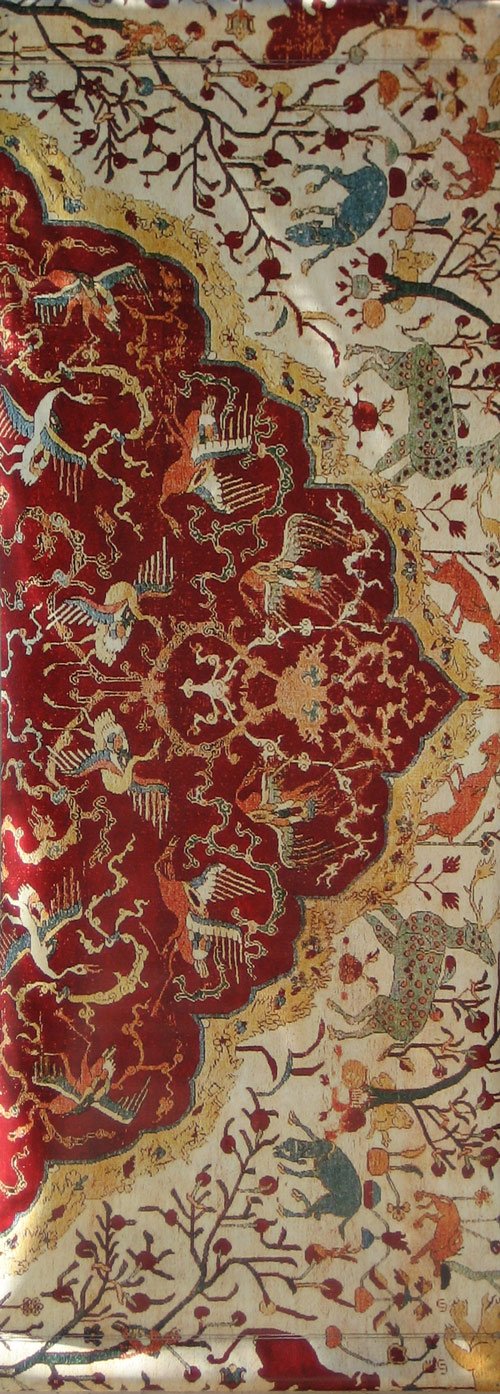Collection: Coronation Carpet
Very little is known about the carpet's history from the time it was woven circa 1520-1530 in Safavid, Iran until the Coronation in 1902. Both the Coronation and Ardabil Carpets shown at this exhibition are from Safavid. Because they are believed to have been woven in the same era, it is possible to extrapolate some general details about the origin of the Coronation Carpet from the rich history of the Ardabil Carpet.
In the early 1500's, Shah Isma'il is credited with founding the Safavid Dynasty. During his reign, Shah Isma'il encouraged travel to the northwest city of Ardabil to visit the shrine of Sufi leader and mystic, Sheikh Safi. Shah Isma'il's son, Shah Tahmasp, expanded Sheikh Safi's shrine and ordered that the two famous Ardabil carpets be woven in honor of the Safavid dynasty. One of these two Ardabil carpets is owned by LACMA and was on exhibit with the Coronation Carpet. The other Ardabil Carpet is owned by the Victoria and Albert Museum in London. While the Coronation Carpet was not from Ardabil, the origins of the Ardabil carpets inform our understanding of early Safavid, which is the Coronation carpet place of origin. Most likely the carpet made its way to Europe by way of trade and was owned by royalty or other wealthy persons or institutions in the 16th century.
Carpet weaving before Safavid times was considered relatively unsophisticated. However, with Shah Tahmasp's support of the arts, endeavors such as bookbinding, ceramics and carpet weaving gained notoriety. It is thought that carpets of this time took three to four years and the dedication of up to 10 weavers to complete.
In the early 1500's, Shah Isma'il is credited with founding the Safavid Dynasty. During his reign, Shah Isma'il encouraged travel to the northwest city of Ardabil to visit the shrine of Sufi leader and mystic, Sheikh Safi. Shah Isma'il's son, Shah Tahmasp, expanded Sheikh Safi's shrine and ordered that the two famous Ardabil carpets be woven in honor of the Safavid dynasty. One of these two Ardabil carpets is owned by LACMA and was on exhibit with the Coronation Carpet. The other Ardabil Carpet is owned by the Victoria and Albert Museum in London. While the Coronation Carpet was not from Ardabil, the origins of the Ardabil carpets inform our understanding of early Safavid, which is the Coronation carpet place of origin. Most likely the carpet made its way to Europe by way of trade and was owned by royalty or other wealthy persons or institutions in the 16th century.
Carpet weaving before Safavid times was considered relatively unsophisticated. However, with Shah Tahmasp's support of the arts, endeavors such as bookbinding, ceramics and carpet weaving gained notoriety. It is thought that carpets of this time took three to four years and the dedication of up to 10 weavers to complete.
-
16th Century Coronation Carpet
Vendor:LACMARegular price $499.00 USDRegular priceUnit price / per

